 This week's feature is an interview with Jake Strang, now the Director of Annual Giving and Alumni Engagement for the Tepper School of Business at Carnegie Mellon University. Jake was, until recently, the Senior Associate Director of Annual Fund Program for Columbia University, where he played a role in the establishment of Columbia Giving Day, among many other things. Columbia Giving Day has become a tradition at Columbia, raising over $14 million in 24 hours this year. Jake started his career in fundraising as a Carolina Caller at the University of South Carolina, when I managed the call center. I'm so proud of his success! I asked Jake some questions about getting started with giving days and what strategies have been the most successful in his experience.
*Giving Tuesday is a campaign to make the Tuesday after Thanksgiving dedicated to charitable giving, countering the commercial focus of Black Friday and Cyber Monday.
No one department is responsible for a successful giving day. Working with your team is really the key to making the day a success. Often, creative solutions are needed to accomplish the overall goal and strong partnerships are what make it possible. Giving Days must be a team effort between everyone from annual giving to gift processing to web initiatives and marketing and communications. Without bringing in the full team and having support from senior management giving days can see only limited success. Challenge Matches and Incentives Challenge matches and incentives are another essential part of giving days. As fundraisers, we need to ask ourselves what our donors are asking themselves, “Why today?!” The answer is to make the gift go further via matching funds, engage new and returning audiences, build social reach, and set organization records. Among other reasons, this is why the giving day model truly works. Donors want to know they’ve made a difference, not just by giving but also by giving on this particular day. More and more we see the rise of the digital age in giving. How do you get donors interested and how do you keep them coming back? By providing live updates on the day, hourly challenges and friendly competition, donors are incentivized to come back and check on the progress throughout the day…and hopefully make an additional gift if they’re engaged! Innovation Don’t be afraid to innovate and try new things. Giving Days are a great platform for my two favorite words “pilot program.” Because the campaign is only 24 hours, it is special and should be treated as such. Giving days are a great place to test new ideas on a small scale and build them out once you see the response of your audience. At Columbia, we used Columbia Giving Day as an innovation springboard. Numerous pilot programs and technologies were created and then reused in everyday giving because they started on Giving Day.
By "gamificating" our ambassadors, they were encouraged to post, share, and get likes/comments on their status updates. We gave away prizes to our top ambassadors to reward them. We actually found that in year 1, our top ambassador was an international non-donor who made his first gift on Giving Day. After the success of the program, we later transitioned it to the Alumni Association who has continued to build and see success with engaging volunteers across the US and internationally in this way! Throughout the year, ambassadors are supplied content from events, graduation, as well as other top performing social posts keeping them engaged as they promote on behalf of the school. More about Jake Strang: With over a decade of fundraising experience, Jake Strang currently serves as the Director of Annual Giving and Alumni Engagement at the Carnegie Mellon Tepper School of Business in Pittsburgh, PA. He is responsible for overseeing annual giving, alumni marketing, and volunteer programs for the school. Prior to his current role, he spent four years with Columbia University as the Senior Associate Director for Annual Fund Programs. While there, Jake oversaw a number of Annual Funds, special initiatives and worked on the core team for the first five Columbia Giving Days. He began his fundraising career with Ruffalo Noel Levitz as a student caller for his alma mater, the University of South Carolina. He later was responsible for managing the phone programs at both South Carolina and Columbia University. Strang holds a Bachelors of Science in Marketing and Management from the University of South Carolina’s Darla Moore School of Business and Master of Science from Columbia University in Fundraising and Non-Profit Management.
0 Comments
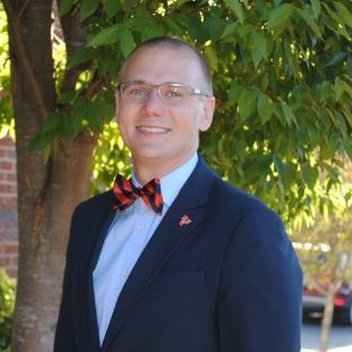 This week's feature is an interview with Nick Foster, who serves as the Associate Director of Development for the School of Medicine at the University of Virginia. We covered a lot of topics, including how he plans his travel schedule, questions to ask on donor visits and how to stay connected to your children when traveling. And I learned about a very special bear in the process! Enjoy! Q: How much do you travel for your position? How do you decide where to go? A: I cover a total of 11 states, and two cities in Virginia (States: Alabama, Arizona, California, Illinois, Louisiana, Michigan, Minnesota, Mississippi, Nevada, New Mexico and Wisconsin. Cities in Virginia: Lynchburg and Richmond). To cover the territory effectively I visit one or more of the states in any given month. A trip could be “simply” traversing Los Angeles, or making the 600 mile trip from Minneapolis, MN to Chicago, IL via Rochester, MN, La Crosse, WI, Madison, WI, and Appleton, WI. For the first twelve months in the role I divided my time, proportionally, between the states. For instance I visited California, with over 500 med alumni, four times; and Mississippi, with just over 100 med alumni, for just three days. Now, as I’ve qualified individuals, and gift discussions have developed my travel schedule is determined more by these conversations than simply trying to visit a territory. Q: What's your theory on travel planning? Get the anchor visit first or just go for it? My theory is “You’re not going to raise money, that often, from behind a desk. Get on the road and engage those individuals who have shown they are invested in your program by the giving of their time, talent or treasure.” I subscribe to the “book it and then secure the visits method”. Working with physicians everything can be very last minute. Trips generally come together a couple of days out. As I sit here writing this (Thursday) I’m going to Michigan for four days next week, I have seven confirmed visits, three “I’d love to see you, call me when you’re in town”, and two “I won’t know my schedule until Monday, call me then”. You just have to do it and if you have spare time when you’re on the road, you can always focus on your moves management plan for donors who aren’t in the area. Q: What are your favorite questions for donors on a discovery visit? A: The general theme of the conversation is to get to know the individual. I usually I like to hear about their current relationship and feelings towards UVa, what their time was like in school, were there any mentors, why did they go into medicine, how did they get to UVa, where did they do there residency, how did they ended up in the city they are currently working, how long have they been in the area, family and pastimes. I like to ask if they have any questions, or if they keep up with the news from the school. Most importantly, I always thank them for their support and ask what inspires their philanthropy, and ask if there is anything I can do for them. Q: What are your best 2nd visit questions? How do approach a donor to see if they will entertain a proposal? If the first visit has gone well, then I try and interact with the alumni between visits. This might be sending articles in their practice area, telling them how their giving makes a difference, inviting them to events etc. (I use the fundraising software to remind me and then track these interactions, try not to go rouge with shadow databases!) On a second visit I might ask “you mentioned in our first visit that you’d received a scholarship and that gave you the opportunity to come out of medical school virtually debt free. I hope that gave you the opportunity to select the area of medicine that interested you the most. The financial aid package that you likely received was most likely due in part to a generous alumni, like yourself, making a commitment to the school and endowing a scholarship fund. Doc, you’ve been a loyal and generous supporter and I was wondering if we could have a conversation about ways that you could set up your own scholarship and give students who are coming out of medial school now a similar opportunity to the one you experienced.” Q: What are your favorite travel loyalty programs?
Q: Tell me about Stuffed. What other things do you do to stay connected with your son while you are on the road? Stuffed is a travelling bear that my son gave me. If you press his paw he says, in Henry’s voice, “Hi Dad, I love you and I miss you”. Stuffed sits in the passenger seat when we drive, and he loves having his photograph taken when we visit interesting places. You can follow him on Facebook at The Adventures of Stuffed the Talking Bear. When I’m on the road I’d like to say that we Facetime each evening and I read him bedtime stories, but Henry isn’t interested in that! I might get a quick “Hi Dad, I’m going to play, bye Dad.” I do try and get a good morning “hello”, and check in after school to hear how his day went. I also text pictures of Stuffed. I also try and bring back a gift that is from the area, for instance I brought him the book The Three Little Javelinas from Phoenix, and Petite Rouge: A Cajun Red Riding from New Orleans. He also just got a Cub’s t-shirt from Chicago! More about Nick Foster: Nick started his working life in the music industry. For six years he worked for a record label and events company. In this role he oversaw 120 events a year and was part of a team that had success with getting a record in the Top 10 of the UK Singles Chart. It wasn’t until he moved stateside that he decided it was time to take his career in a different direction. Following a short spell at Waffle House, everyone should work as a line cook or waitress at some point in their lives, he ventured into the nonprofit world.Nick started working for a small school in Mobile, AL that served children with Autism. Under Nick’s leadership the school successfully grew its annual fundraising totals by over 150%. After a brief stop in Hattiesburg, MS at The University of Southern Mississippi, Nick found himself at The University of Virginia, working in the School of Medicine. Nick’s role at UVa is to work with enthusiastic alumni who want to partner with the University to make the student experience and our worldwide research reputation as strong as possible. Nick will play a significant role in the University's upcoming Third Century Campaign. 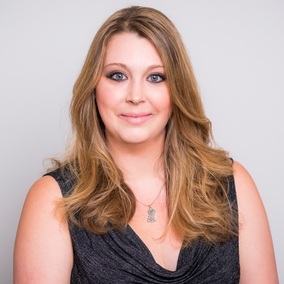 his week's Thursday feature is an interview with Katie Garcia, the founder and president of Athene Strategies, a strategic and crisis communications consulting firm. I asked Katie a series of questions about an important topic for any fundraiser, how to communicate with your constituents during an organizational crisis. 1) When a non-profit organization finds that it is in the midst of a crisis, what is the first steps that the staff should take? The first step that an organization needs to make when in a crisis is to recognize that a crisis is occurring. When people think of crises, often times they think of the effects of poorly handled crises – they think of organization disasters. But a crisis is not necessarily a disaster. A crisis is a time when an organization is unable to operate normally. When handled poorly, a crisis can lead to a loss of trust and confidence in those who matter most and cause reputational harm. But when handled in a timely and effective way, a crisis can actually become an opportunity to gain competitive advantage, to build trust and confidence, and move the organization forward in achieving its goals. So the first step is to recognize when an organization is or will soon not operating normally. The second step is to clearly identify what the crisis is. Crises are organizational problems, not simply communication problems. Communication in and of itself is not enough to end a crisis. (Communication can exacerbate a crisis or organizational problem though). If you do not identify where the actual problem lies, you will not be able to respond in a way that will effectively end the crisis. Therefore, you need to clearly identify what the organizational problem is before you respond to the crisis. The third step is to decide how to respond to the crisis by asking and answering the following question: What would reasonable people appropriately expect a responsible organization to do when faced with this? This question is important. It is not asking what it is that an organization wants to say. That is self-indulgent. And while it might make an organization feel good, it will not move those who matter most to continue to support with the organization. Rather, the right question focuses on what the people who matter most – an organization’s stakeholders – would reasonably expect a responsible organization to do. And if an organization asks and answers this question, and then responds based on that answer in a timely way, an organization can end the crisis, increase trust and confidence in the organization, and get back to operating normally. 2) Is there any difference in how you handle a controversy versus a crisis with respect to communication? A controversy may or may not become a crisis. A controversy is a matter of public dispute, debate or disagreement. If a controversy gets to the point where the organization can no longer operate normally, then the response would be the same as for a crisis—to ask and answer the question: What would reasonable people appropriate expect a responsible organization to do when faced with this? And depending on what the crisis is, the response will differ based on the answer to that question. But the process is the same as with every crisis. However, a controversy may not become a crisis. For example, in a university setting, a dispute over hiring a professor because of their identity or a change in a tuition model are not crises. In that case, a controversy could be an opportunity to showcase the mission, values, and work of the organization in a way that reaches a larger audience than the organization would otherwise be able to reach. But to do that effectively, an organization would need to think strategically about 1) what it wants to achieve; 2) who the organization needs to reach to achieve that goal; and 3) what the organization wants that audience to think, feel, know or do in order to help achieve that goal. 3) What's your advice for fundraising during a crisis? Fundraising during a crisis needs approached in a strategic way. Whether or not and how to fundraise during a crisis will depend on what the crisis is and how the organization is responding to it. Sometimes, it may not be appropriate to fundraise during the crisis itself. For example, if the crisis revolves around an accusation that leadership have unethically or illegally handled their organization’s finances, fundraising before the crisis is resolved may not be appropriate and can actually exacerbate the crisis. Other times fundraising could be part of or support the crisis response. For example, if there is a natural disaster that affects those an organization serves or where the organization operates from, it could be that the organization fundraises specifically to address that need. When figuring out if and how to fundraise during a crisis, it will go back to the question of: What would reasonable people appropriately expect a responsible organization to do when faced with this? Fundraising during a crisis should be done in ways that are consistent with or in support of the crisis response and are appropriate given the circumstances of the crisis. 4) What are the best signs that the crisis is over? The key indication that a crisis is over is that the organization goes back to operating normally. If the crisis is handled well, that moment could happen right after the initial response. If an organization responds effectively right at the beginning, then the crisis may end before it really begins. The best handled crises are the ones that no one, outside the response team, knows about or noticed. But if the crisis is not handled well or in a timely enough way, or if the response involves some sort of shift within the organization – whether it be in personnel, leadership, or processes – it will likely take more time to get back to operating normally. And normal operations after the crisis may be different than what it was before the crisis. 5) What are your 3 favorite tips for handling the communication during a crisis? 1.) Take a deep breath and a step back. It is difficult when an organization you have devoted yourself to is in crisis. As human beings, it is in our nature to respond emotionally first when faced with a crisis. Whether it be with anger, confusion, sadness, panic, disbelief, denial – whatever you may be feeling, take a deep breath. And then another one. Find a way to stay calm. You will not be able to think clearly or respond effectively if you become consumed in your own feelings about what is happening. And then take a step back. Look objectively at the situation. See the whole board. Only then will you be prepared to respond to the crisis. 2.) Remember that leadership is not about you, it’s about who you serve. Leaders are charged with making decisions for the good of the organization. Sometimes that means doing or saying things that you may not be comfortable with or may not want to say or do. During a crisis, it is only too easy to get stuck in focusing or making decisions based on what you want to do, rather than what you need to do to fulfill the reasonable expectations of those who matter most to the organization. Remember when responding to a crisis that it is not about you or what you want – it is about your stakeholders. Leaders need to overcome the fear and inertia that leads to inaction in order to respond in timely and effective ways. 3.) Learn from past experience. We need to learn from past experience, both your own experience and the experience of others. In terms of crises, we can open any newspaper or watch any news program to witness what other organizations in crisis have done – decisions that either led to a crisis or decisions in how the organization responded to a crisis. Learn from these examples. They can guide you and organization as you answer that question of what reasonable people would appropriately expect a responsible organization to do when faced with this. What works for one organization may not work for another, but you can learn from other organizations. And in your own life, learn from your own experiences of facing crises. Learn from past crises in your life and the organization. What worked? What didn’t work? What could you or the organization have done differently? Let those past examples also guide you as you encounter crises or potential crises in your organization so that you can respond in timely and effective ways. More about Katie Garcia: Katie Garcia is the founder and president of Athene Strategies, a strategic and crisis communications consulting firm. For more than 10 years, Ms. Garcia has worked in the field of strategic and crisis communication and leadership development. During this time, she has advised leaders and organizations across multiple sectors including non-profits, international and national NGOs, religious institutions, educational institutions, political action campaigns, inter-governmental organizations, and small businesses. Ms. Garcia has trained and advised leaders and emerging leaders across sectors to improve their ability to communicate effectively in their positions of leadership. Prior to founding her firm, she served as Interim Communication Consultant for the Starr King School for the Ministry and Communications Consultant for Religions for Peace. She has also worked in organizations such as Freedom to Marry, Disaster Chaplaincy Services, and Logos Consulting Group. Hi! It's Jessica. I draw on the concepts that Katie presents in this article in my webinar presentation titled Fundraising in a Crisis. This webinar will launch Wednesday 3/18/20 for free as a resource for nonprofits to respond to the COVID-19 crisis. You can register here: www.realdealfundraising.com/crisiswebinar. 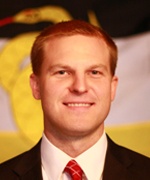 This week's Thursday feature is an interview with Markus Jones, Senior Vice President for Development of the Sigma Nu Educational Foundation. His organization launched their first ever phonathon last year and I asked him some questions about the process and what the results have been for his organization.
Phonathon fundraising represented a method of communication that I felt our organization had not fully explored in the past. Likewise, it offered a unique opportunity to reach non-donors, friends and parents of our members, whom we had never previously contacted. As a major gift fundraiser, I also saw the Phonathon as a means of prospect generation for future campaign efforts. We needed to resupply the pipeline for our mid-range and major gift officers to cultivate in the very near future. We have been very carefully referring outliers from this effort to those gift officers.
Additionally, we were met with similar concerns from other members of the staff who are not directly involved with the fundraising operations. I worked with our communications team and other fundraising staff to develop internal communications that addressed their concerns in advance of launching the campaign. We shared FAQs, details about database segments, call schedules, and sample call scripts with everyone on staff prior to making calls. We also invited them to actively engage with donors who may have questions or concerns along the way. After the first week of calling, we distributed “canned responses” to commonly heard objections to the staff assigned to the front desk at the Fraternity Headquarters. We also created a page on our website dedicated to the Phonathon which carefully identified the company we contracted to conduct the calls, constituents who would receive the calls, why we were calling, and the timeframe in which calls would be made. This also helped to mitigate some push-back we received from outside constituents and, I believe, added some validity to the callers’ efforts.
Side note: Our vendor employs a very diverse group of callers and actually worked with us to recruit collegiate members from one of our Sigma Nu chapters near the call center. The feedback from the callers was also really great. They all enjoyed working on the campaign and speaking with our alumni on the phone. This was very encouraging for future partnerships.
More about Markus Jones: Prior to joining the staff of the Sigma Nu Educational Foundation, Markus served as a Development Officer at the University of Southern Mississippi Foundation. He began his career in nonprofit development and volunteer management following Hurricane Katrina as the Director of Marketing and Resource Development for the United Way of South Mississippi in Gulfport, MS. Markus has worked in the nonprofit development field for his entire professional career and strives to continue this path in the future. He holds a bachelor's degree in Advertising from The University of Southern Mississippi and in his spare time Markus enjoys books, the outdoors, volunteering and traveling. |
Jessica Cloud, CFREI've been called the Tasmanian Devil of fundraising and I'm here to talk shop with you. Archives
July 2020
Categories
All
|
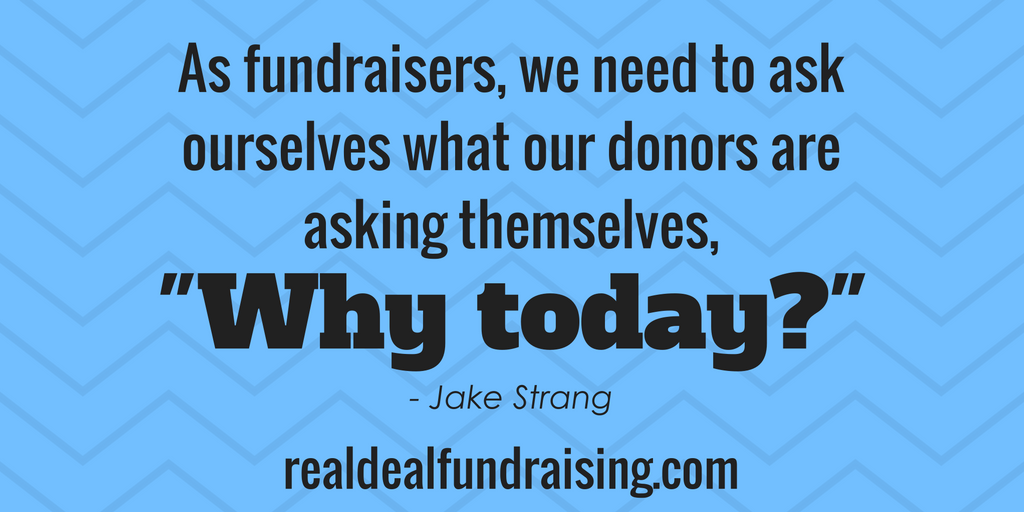
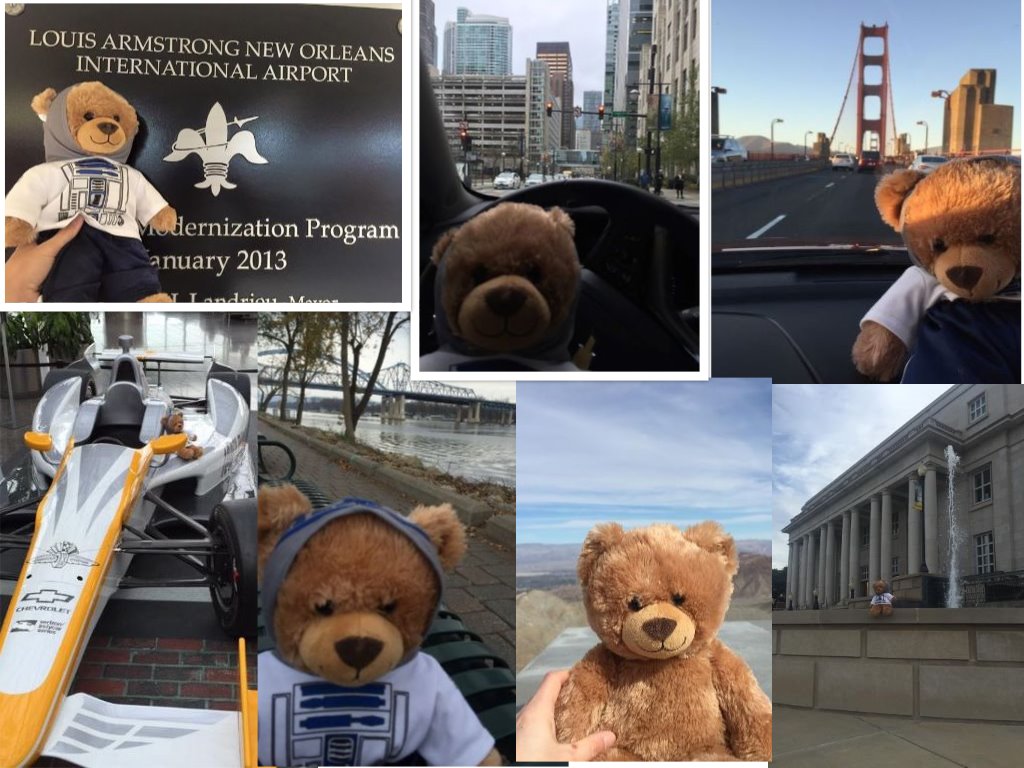
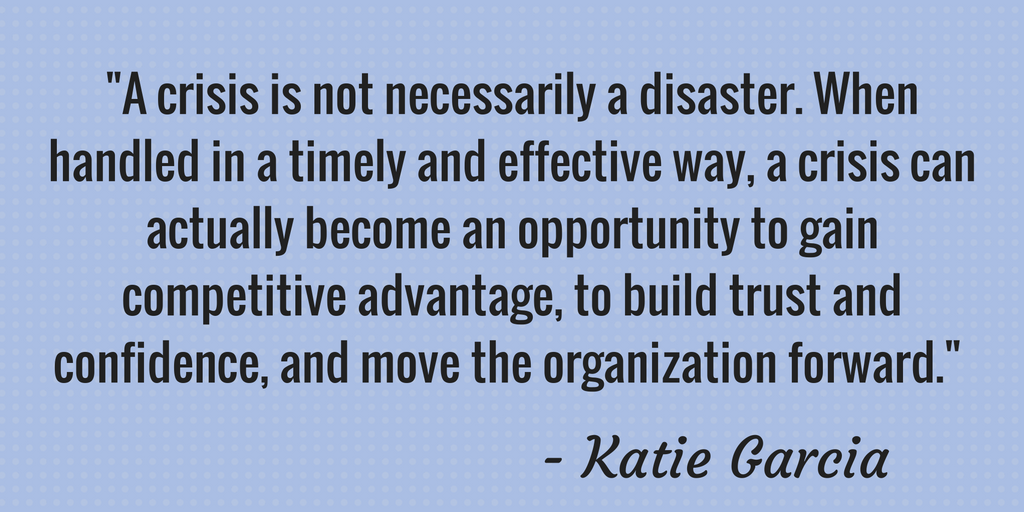
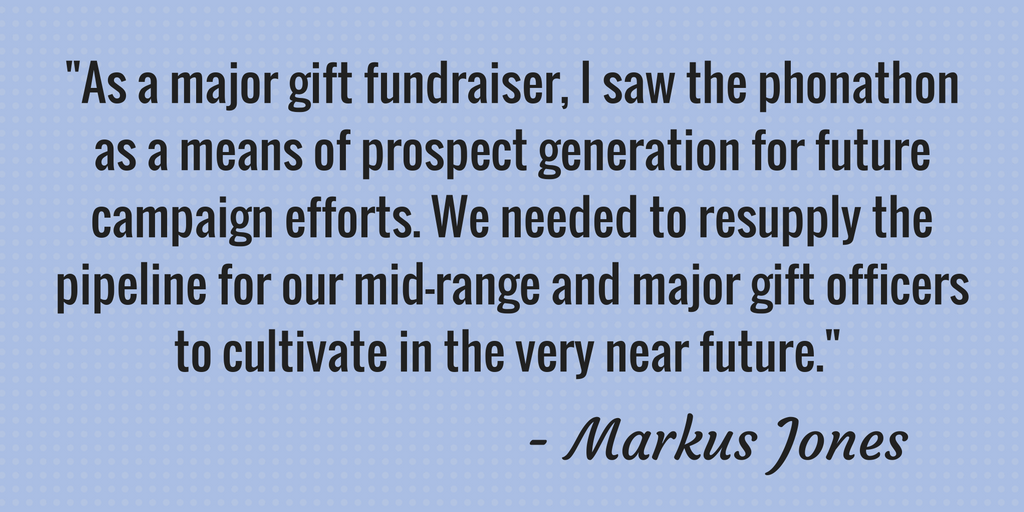
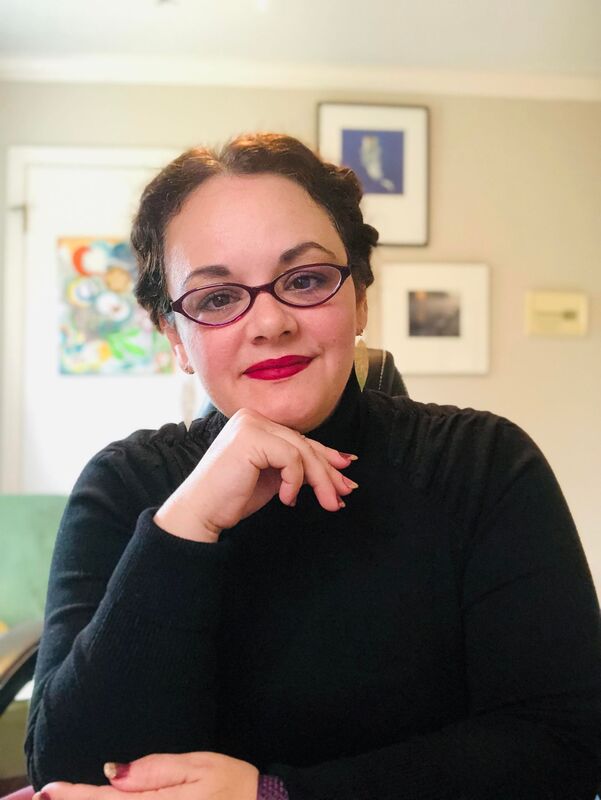
 RSS Feed
RSS Feed
